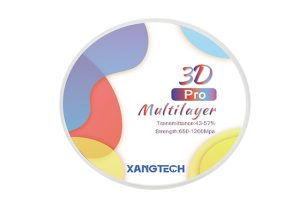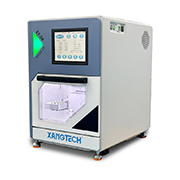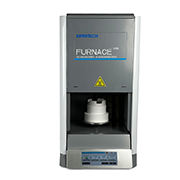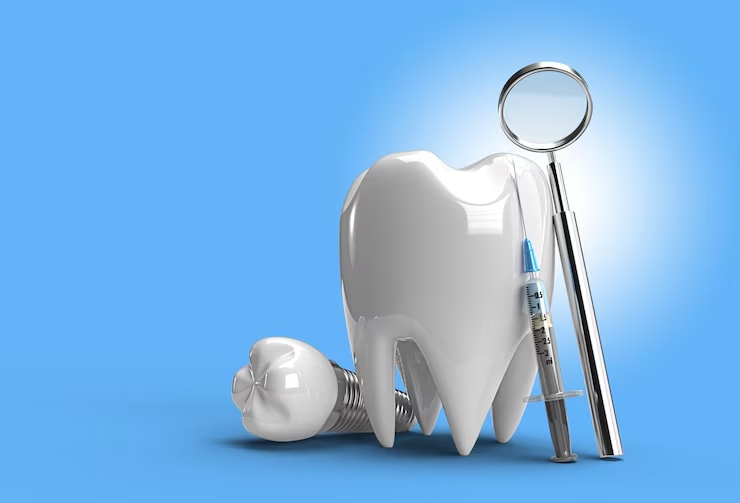What Affects the Accuracy of Dental Milling Machines?
How Is Milling Precision Evaluated in Dentistry?
In dentistry, milling precision is judged by checking how accurate and consistent the milled restorations are. A key measure is machining accuracy, noted in millimeters. Top dental milling machines achieve tolerances as fine as 0.01 mm. This ensures restorations fit perfectly in the mouth.
For instance, XANGTECH’s milling machines—XT50, RX-8H and RX-8Y—all hit a 0.01 mm accuracy mark. Such precision is vital for creating crowns, bridges and implant supports that work well and look good.
What Impacts the Accuracy of Milled Restorations?
Several factors shape the final accuracy of dental restorations:
Material Type and Its Effect
Materials behave differently when milled. Tough ones like zirconia need stronger tools and slower cuts to avoid chips or distortion. XANGTECH’s zirconia blocks, like the High Translucent Pre-Shaded Zirconia Block, are made with uniform hardness via cold isostatic pressing. This leads to precise milling and durable restorations.
Toolpath Planning and Spindle Speed
Smart toolpath planning reduces tool wear and gives smooth finishes. Spindle speed also matters for clean cuts. XANGTECH machines reach up to 60,000 rpm. This allows quick material removal while keeping details sharp in complex shapes.
Calibration and Upkeep
Regular calibration keeps machine parts aligned and accurate. Features like automatic calibration and probe adjustments ensure steady results across jobs. The RX-8H model has smart tools like auto-calibration and needle compensation to cut down human errors and meet exact specs.
Why Is Accuracy Crucial in Dental Milling?
How Does Accuracy Impact Patient Results?
High precision leads to better outcomes. It ensures restorations fit snugly with the patient’s teeth. Poorly fitting restorations can cause discomfort, plaque buildup, or gum issues.
Can Poor Milling Cause Restoration Failure?
Yes. Inaccurate milling can lead to prosthetics that don’t fit right or are unstable, risking failure.
Fit and Edge Quality
Restorations with bad edge fit let bacteria slip under crowns or bridges. This can cause cavities or gum disease. Precise edges are key for lasting success.
Bite Adjustments and Chair Time
Inaccurate restorations need heavy adjustments by dentists. This can discomfort patients and slow down lab work. Precise milling reduces bite issues, making workflows smoother.
Meet XANGTECH’s Dental Milling Solutions
At XANGTECH, we know precision is everything in dentistry. Our milling machines deliver top performance for various needs, from metal prosthetics to multi-material restorations.
What Makes XANGTECH Stand Out?
With over 11 years in dental lab equipment, we offer complete solutions for dentists worldwide. Our machines feature one-click cutting, live monitoring, smart calibration and open software support. These boost productivity while keeping quality high.
RX-8H Metal Milling Machine: Built for Precise Metal Work
Features and Uses
The RX-8H includes water cooling, dynamic suction, cutting oil flow and multi-axis control. It handles tough materials for frameworks, implant bars and metal prosthetics.
Performance for Metal Restorations
Using Millbox software for one-click cutting, it delivers steady results, even for complex tasks. Smart features like auto-detection and needle compensation prevent errors during long runs.
RX-8Y Milling Machine: Flexible for Many Materials
Multi-Material Support
The RX-8Y processes up to eight materials at once, like zirconia, PMMA, wax, PEEK, lithium disilicate, press ingots and glass ceramics. It’s perfect for labs with varied daily cases.
Precision in Complex Cases
Its 5-axis cutting tech allows fine grinding at large angles. This keeps details sharp, even for full arch or implant-supported restorations.

XT50 Milling Machine: Small but Mighty for Labs
Compact Design with Big Output
The XT50 is built for modern labs, blending small size with strong features like 90° vertical cutting for front teeth aesthetics. Its power-off resume function avoids workflow breaks.
User-Friendly Interface
Its C-type clamp boosts material use by 20%. Simple controls make it easy for new technicians to run in busy labs.
How to Judge a Dental Milling Machine Before Buying?
What Should Labs Look for?
When picking a milling machine, labs should focus on:
Precision Levels
Machines with 0.01 mm accuracy are top choices for reliable, high-quality restorations.
Software and System Flexibility
Open software lets machines work with various CAD platforms. XANGTECH’s RX-8H milling machine supports Millbox with real-time monitoring, a big plus for digital workflows.
Maintenance and Support
Good technical support cuts downtime. Our team offers remote help across power, software and assembly needs.

How Can Test Runs Check Accuracy?
Test runs let labs compare milled results to digital designs using their materials. By checking milled units against CAD files with tools like intraoral or lab scanners (e.g., XANGTECH’s), buyers can confirm if the machine meets quality standards before purchasing.
FAQ
Q: What’s the typical tolerance for high-precision milling machines?
A: Top machines hit around 0.01 mm accuracy. XANGTECH XT50, RX-8Y and RX-8H meet this standard.
Q: Does milling accuracy change with different materials?
A: Yes. Harder materials like zirconia need slower speeds and stronger tools than softer ones like PMMA or wax. Settings must match material traits.
Q: Do milling machines need regular recalibration?
A: Yes. Calibration keeps accuracy steady over time. Machines like the RX-8H have auto-calibration to make this easier.











